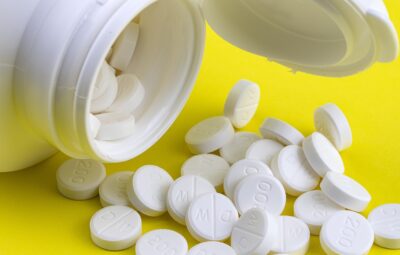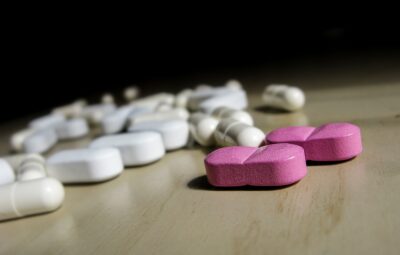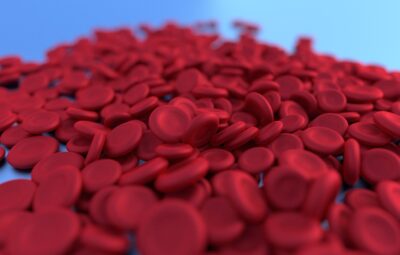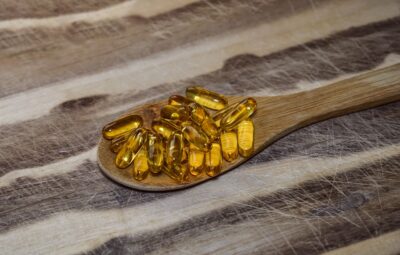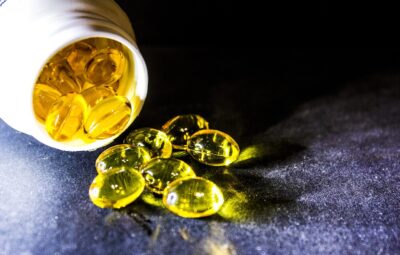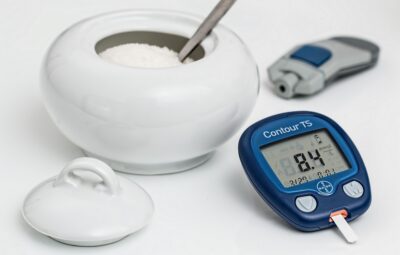Do you have a wound that won’t heal? This condition, which can be both frustrating and dangerous, may continue even when the wound is being properly cared for. Although the human body can heal itself, sometimes the process is interrupted. We will be looking at natural ways to heal wounds that don’t seem to be getting better, as well as exploring red light therapy as a possible solution that could also help with the underlying conditions preventing healing.
Why Some Wounds Don’t Heal
If a wound does not heal within eight weeks, it is considered to be a chronic wound. Ulcers are commonly caused by poor circulation, a weak immune system, or underlying chronic conditions such as diabetes.
Complications that Prevent Healing
Other than taking care of the wound itself, it is important to treat any underlying conditions that could be preventing the body from healing itself.
Slow wound healing could be caused by:
- Poor circulation of blood and lymph. People with diabetes often suffer from poor circulation, as do those who are obese or who suffer from heart conditions or arterial issues.
- Infections, including staph, tetanus, and necrotizing fasciitis (a rare bacterial infection that kills soft tissue) can damage or kill cells.
- Chronic stress, which weakens the immune system and interferes with the functioning of the parasympathetic nervous system (responsible for the body’s repair functions).
- Medicines and treatments include corticosteroids, non-steroidal anti-inflammatory drugs (NSAIDs), chemotherapy, and radiation.
- Lifestyle choices, including smoking and abuse of alcohol and drugs.
- Chronic inflammation, which causes cell-damaging oxidative stress.
- Chronic illnesses, such as cancer and diabetes.
- Mitochondrial dysfunction: Mitochondria are tiny structures inside cells that produce the energy that cells need to function. If mitochondria can’t produce enough energy, cells cannot perform their functions. Mitochondrial dysfunction is often caused by chronic inflammation.
- Poor collagen and elastin production.
Most of these obstacles can be removed, and the body’s natural healing process can be made more efficient.
Conventional Treatments
Conventional chronic wound treatments include:
- Debridement, which is the removal of dead or inflamed tissue using scalpels or other medical instruments, high-pressure water, or even maggots. This often painful process requires local or general anesthesia.
- Compression bandages or stockings, which use pressure to assist the veins in carrying blood back to the heart to improve circulation to the injured area.
- Wound dressings, especially those that contain hormone-like substances called growth factors, promote cell growth while keeping the area protected and clean.
- Antibiotics to kill bacteria; the risk is that surviving bacteria could become antibiotic-resistant.
- Painkillers, along with wound dressings that contain ibuprofen (an NSAID).
- Skin grafts are useful for large wounds that cannot close on their own. Skin is taken from another part of the body and transplanted onto the wound. Sometimes, the treatment uses synthetic skin along with human cells.
Conventional treatments don’t usually address the root cause of why wounds take a long time to heal. Red light therapy and natural remedies can help improve your skin health.
Red Light Therapy for Slow-Healing Wounds
Red light therapy is a natural way to support the body’s wound-healing process. It is safe and speeds up the body’s natural healing process. Red light therapy is an effective treatment for skin health, muscle recovery, neuropathy, and wound care.
Red and near-infrared light therapy are both used to stimulate beneficial biological processes. Red light and near-infrared light (NIR) have the most widely studied therapeutic value and are typically in the range of 630-660 nanometers (nm) and 810-850 nm, respectively.
Red light therapy was first discovered in the late 1980s by NASA scientists who were studying ways to grow plants in space. The scientists who were taking care of the plants found that the wounds on their hands healed faster when they were exposed to red and NIR LED lights.
The discovery of the health benefits of light by accident sparked interest in using light to improve human health. Thousands of studies to date have demonstrated the effectiveness of red light therapy.
Halt Subcutaneous Bleeding with Vitamin K
Vitamin K1 is a vitamin that helps your blood clot. Without it, you might bleed too much. Without this cofactor, the synthesis of these six proteins would not be possible. Because it is fat-soluble and important for healthy blood clotting, vitamin K1 would be a good choice for a topical treatment for disorders caused by vascular injury. When it is applied to the skin, vitamin K1 goes into the pores and is transported deep into the dermis. It is effective in targeting damaged capillaries. Vitamin K1 helps the blood clotting process and stops bleeding, which allows the skin to heal. Plastic surgeons have been using vitamin K creams for many years to reduce bruising and scarring after procedures.
In one clinical study, patients who were suffering from a blood vessel and skin disorders caused by trauma, surgery, or sun damage were treated by using a vitamin K1 cream. This study showed the healing power of vitamin K1. 3 out of 5 patients showed a significant decrease in the appearance of blood vessels following the application of the vitamin K1 cream after 6 weeks.
In a study with 12 patients who bruised easily on their hands and arms, applied a vitamin K1 cream daily for 4 weeks. At the end of the study, all participants showed that the active compound side required less time to heal compared to the placebo side, as well as a decreased appearance of lesions following trauma. No adverse effects were reported. The data showed that two patients who used the active cream saw a decrease in the appearance of liver spots, while the placebo group saw no change.
Arnica montana: Nature’s Preferred Healing Agent
Arnica montana, more commonly known as mountain tobacco or leopard’s bane, is a wildflower that grows in the mountains of Europe and North America. It has been used medicinally for centuries to treat bruises and inflammation. A sunflower relative, it has cheerful yellow blossoms that grow on stems 1 to 2 feet tall.
Arnica has been used medicinally since the 1500s. The Catawba Native Americans in North America have used extracts from the arnica flower, root and plant for hundreds of years to bruise, soothe muscle aches, reduce inflammation and heal injuries. Some of the useful substances found in arnica are flavonoids, polysaccharides, and sesquiterpene lactones.
This class of plant compounds includes over 3000 naturally occurring substances, making it one of the largest groups of biologically active polyphenols known to modern science. -The main sesquiterpene lactone found in alcohol extracts of arnica flowers is Helenalin, which helps fight painful inflammation by inhibiting the activity of nuclear factor-kappaB, or NF-kB. -This inflammatory cytokine (cell signaling molecule) enters the cell’s nucleus and “switches on” specific genes that activate an inflammatory or immune response.
Arnica’s anti-inflammatory properties reduce puffiness and skin inflammation. Subjects in a clinical study applied a simple emulsion with arnica extract to the under-eye area on one side of their face twice a day for 4 weeks. The subjects had modest to severe eye area puffiness. A 1-10 scale was used to measure puffiness, which was based on a combination of visual observation, palpation of the test area, indentometry (a method to measure skin firmness), and photography. Arnica extract was found to be 24% more effective than the control at reducing puffiness.
Vitamin D: Antimicrobial and Natural Regenerator
Vitamin D is an essential vitamin for the normal wound-healing process. The active form of vitamin D is important in healing because it can start your skin’s production of a vital antimicrobial peptide called cathelicidin.
When you get a cut, your keratinocytes work quickly to enclose the wound. These cells can produce vitamin D3 from sunlight and also create the active form of vitamin D that your body needs, called calcitriol. As your keratinocytes (a type of cell in the skin) gather, more and more active vitamin D is produced. Once a sufficient quantity is reached, it can activate your vitamin D receptors. This, in turn, triggers the expression of genes that code for proteins that help detect microbes. If a pathogen is detected, cathelicidin production starts.
Cathelicidin works by disrupting bacterial cell membranes, and studies have shown it to be a very efficient killer of offending microbes, even at very low concentrations. Cathelicidin not only has the ability to kill germs but also helps to encourage the growth of new blood vessels and cells, both of which are necessary for proper wound healing. Vitamin D is critical for wound healing as it fights infection and helps repair tissue.
Other Natural Remedies for Slow-Healing Wounds
A few natural treatments that could promote healing while also providing relief from pain include acupuncture, massage, and meditation.
Hyperbaric Oxygen Therapy
The treatment for this condition involves going into a special chamber and breathing nothing but pure oxygen. The oxygen is under high pressure in this chamber, which helps to increase blood oxygen levels. The Mayo Clinic states that increased oxygen in the blood helps fight bacteria and encourages the release of growth factors and stem cells, which promote healing.
Negative Pressure Wound Therapy
Also known as vacuum-assisted closure or VAC therapy, negative pressure therapy involves covering the wound with an airtight dressing that is attached to a pump. This pump continuously sucks fluid out of the wound. This increased blood flow creates negative pressure, which helps keep the wound moist. The treatment has some limitations, including reduced mobility, the potential for pain when changing the dressing, and noise from the pump, which can make it difficult to sleep.
Ultrasound Therapy
Ultrasound therapy uses high-frequency sound waves to clean and heal wounds. The treatment is given by doctors.
Electromagnetic Therapy
Electromagnetic therapy is a type of therapy that uses weak electromagnetic waves. The therapy is done by applying magnets close to the wound. This is because iron is attracted to magnets, and so the movement of the magnet can help to move the iron around in your blood, which in turn can help to stimulate circulation. The treatment works by increasing ATP concentration in skin cells, which promotes healing and reduces swelling. So far, there are no electrical devices that have been approved by the FDA to help with healing wounds.
Tea Tree Oil
Tea tree oil, which is derived from the melaleuca tree native to Australia, is a natural antiseptic. The oil is applied directly to the skin and has been shown to be effective in killing bacteria and fungi.
Honey
Honey has been used as a healing remedy for centuries and is often used in the treatment of wounds.
- Honey has an acidic pH, which encourages the release of oxygen from the blood and reduces the enzymes that impair healing, known as proteases.
- The sugar in honey naturally pulls water out of damaged tissues, which reduces swelling and allows a greater flow of lymph to cleanse the wound of toxins and impurities. These sugars also pull water from bacterial cells, slowing down the rate at which they multiply.
- Honey has an antibacterial effect and can reduce the presence of dangerous Staphylococcus aureus (MRSA) and vancomycin-resistant Enterococci (VRE) bacteria.
Turmeric
The active compound in turmeric, curcumin, has the ability to reduce inflammation and fight infection. Turmeric can be used to reduce pain and inflammation in a similar way to ibuprofen. You can take turmeric as a pill or use it as a paste on your skin.
Aloe Vera Gel
The leaves of the aloe vera plant contain a gel-like substance that is rich in minerals and vitamins. This substance contains glucomannan, which promotes cellular regeneration and reduces inflammation and collagen production. The gel from an aloe vera plant can be used to treat wounds.
Coconut Oil
Coconut oil contains a fatty acid known as monolaurin, which has antimicrobial effects. The oil is used on the skin to help prevent infection.
Summary
As people age, they are more likely to experience unsightly and painful effects from minor accidents, sports injuries, and surgical procedures. By the age of 50, half of all people will have developed varicose veins.
. A number of safe, low-cost, natural solutions are emerging that are supported by a body of clinical evidence to address age-related skin disfigurements, as opposed to medical interventions which can be painful, costly, and unreliable.
The antimicrobial and anti-inflammatory properties of allicin, a compound found in garlic, are believed to enhance cellular growth.


